Introduction to Advanced Sealing and Insulation Solutions
In demanding industrial environments, reliable electrical insulation, moisture sealing, and corrosion protection are paramount. Traditional solutions often fall short in durability, ease of application, or resistance to harsh conditions. This challenge is precisely where advanced materials like self amalgamating tape provide a superior alternative. This specialized tape, also known as self-annealing tape or self-vulcanizing tape, offers unparalleled performance by fusing into a homogeneous, void-free mass upon application, creating a robust, insulating, and sealing barrier.
Our focus today is on the technical intricacies, application versatility, and significant advantages of the PLB self-amalgamating Tape, a leading product engineered to meet the stringent demands of B2B sectors. We will delve into its manufacturing processes, industry trends, precise technical specifications, real-world application scenarios, and how it delivers exceptional value in critical infrastructure projects.
Understanding the Manufacturing Process of Self Amalgamating Tape
The production of high-performance self amalgamating tape is a sophisticated process, demanding precision in material selection and manufacturing techniques. Unlike conventional adhesive tapes, self-amalgamating tape relies on the intrinsic property of its material to fuse with itself under tension, forming a continuous, void-free layer. This unique characteristic is achieved through a carefully controlled formulation and processing sequence.
Key Materials and Formulation
The primary material for PLB self-amalgamating Tape is Polyisobutylene (PIB) rubber. PIB is chosen for its excellent dielectric properties, moisture resistance, and its inherent ability to amalgamate without external heat or pressure. Critical additives are incorporated to enhance specific performance characteristics:
- Elastomers: Providing flexibility and conformability, crucial for wrapping irregular shapes.
- Tackifiers: Carefully balanced to ensure initial adhesion for ease of application while allowing for complete amalgamation.
- Fillers: Such as inorganic oxides, which enhance mechanical strength, thermal stability, and dielectric properties.
- Curing Agents (or Cross-linkers): In some formulations, these are used to promote vulcanization, resulting in a more stable and durable compound.
- UV Stabilizers & Antioxidants: To extend service life in outdoor applications by protecting against environmental degradation.
Manufacturing Stages
The manufacturing process typically involves several key stages, each meticulously controlled to ensure product integrity and performance:
- Compound Mixing: Raw PIB rubber and all specified additives are precisely weighed and mixed in a high-shear mixer (e.g., Banbury mixer or two-roll mill) under controlled temperature. This ensures uniform dispersion of all components, critical for consistent amalgamation and performance.
- Calendering: The mixed compound is then fed into a calendering machine, which processes the material into a thin, uniform sheet. The thickness and width of this sheet are critically controlled to meet product specifications.
- Laminating (Optional): For certain applications, a release liner (typically made of polyethylene or silicone-coated paper) is laminated onto one side of the tape during or immediately after calendering. This prevents the tape from amalgamating prematurely and facilitates easy unwinding during application.
- Slitting: The wide calendered sheet is then precisely slit into the required widths using high-speed slitting machines. Accuracy in slitting ensures uniform tape rolls.
- Winding and Packaging: The slit tape is wound onto cores to form rolls of specified lengths. Each roll is then packaged to protect it from contamination and environmental factors until use.
Quality Control and Testing Standards
Rigorous quality control is integrated throughout the manufacturing process. Key testing standards ensure the final product meets industrial performance requirements:
- ASTM D1000: Standard Test Methods for Pressure-Sensitive Adhesive-Coated Tapes Used for Electrical and Electronic Applications. Relevant for adhesion, tensile strength, and elongation.
- IEC 60454: Specifies requirements for pressure-sensitive adhesive tapes for electrical purposes.
- ISO 9001: Certification for quality management systems, ensuring consistent product quality from design to delivery.
- Dielectric Strength Testing: Measures the maximum electric field an insulating material can withstand without breakdown (e.g., ASTM D149).
- Tensile Strength & Elongation: Critical for assessing mechanical robustness and conformability (e.g., ASTM D412).
- Amalgamation Rate: Empirical testing to ensure proper fusion within a specified time under tension.
- Water Absorption & Moisture Vapor Transmission Rate (MVTR): To confirm its sealing capabilities in humid or submerged conditions.
Typical Service Life and Target Industries
The PLB self-amalgamating Tape is designed for a service life typically exceeding 20 years when applied correctly and protected from extreme environmental factors not within its operating range. Its robust properties make it indispensable across a spectrum of demanding industries:
- Petrochemical: For sealing and corrosion protection of pipelines, cable trays, and electrical connections in hazardous areas.
- Metallurgy: Insulation for high-temperature electrical systems and protection against corrosive fumes.
- Water Supply & Drainage: Waterproofing and sealing submersible pump cables, pipe joints, and conduit entries.
- Electrical & Power Utilities: Primary electrical insulation for cable splices and terminations up to 69kV, busbar insulation, and moisture sealing for overhead lines.
- Telecommunications: Weatherproofing antenna connections, coaxial cable splices, and protecting sensitive electronic components.
- Mining: Robust insulation and water sealing for heavy-duty power cables and connections in harsh, wet, and abrasive underground environments.
In these scenarios, the tape demonstrates advantages such as enhanced energy saving by preventing current leakage, superior corrosion resistance, and prolonged equipment life, significantly reducing maintenance costs and operational downtime.
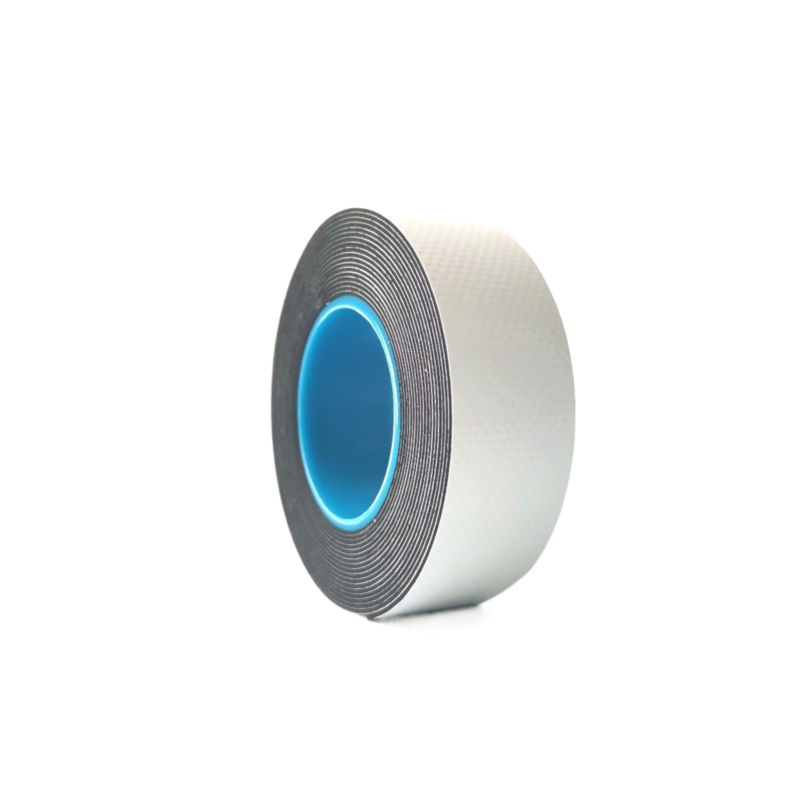
Industry Trends and Market Dynamics for Amalgamating Tape
The global market for advanced insulation and sealing materials, including amalgamating tape, is experiencing steady growth driven by several key industry trends. Increased investments in renewable energy infrastructure, smart grids, telecommunications expansion (5G), and robust industrial automation are fueling demand for reliable and durable electrical components.
Technological advancements are leading to tapes with improved temperature ratings, enhanced UV stability, and better resistance to chemicals and oils, expanding their application scope. The emphasis on safety and environmental compliance (RoHS, REACH) also pushes manufacturers towards producing non-toxic and high-performance solutions. Furthermore, the rising adoption of pre-fabricated or modular construction techniques in various industries necessitates flexible, quick-application sealing methods like vulcanizing tape that can perform under diverse site conditions. Market analysis indicates a CAGR of approximately 5-7% for this segment over the next five years, underscoring the critical role these materials play in modern industrial development.
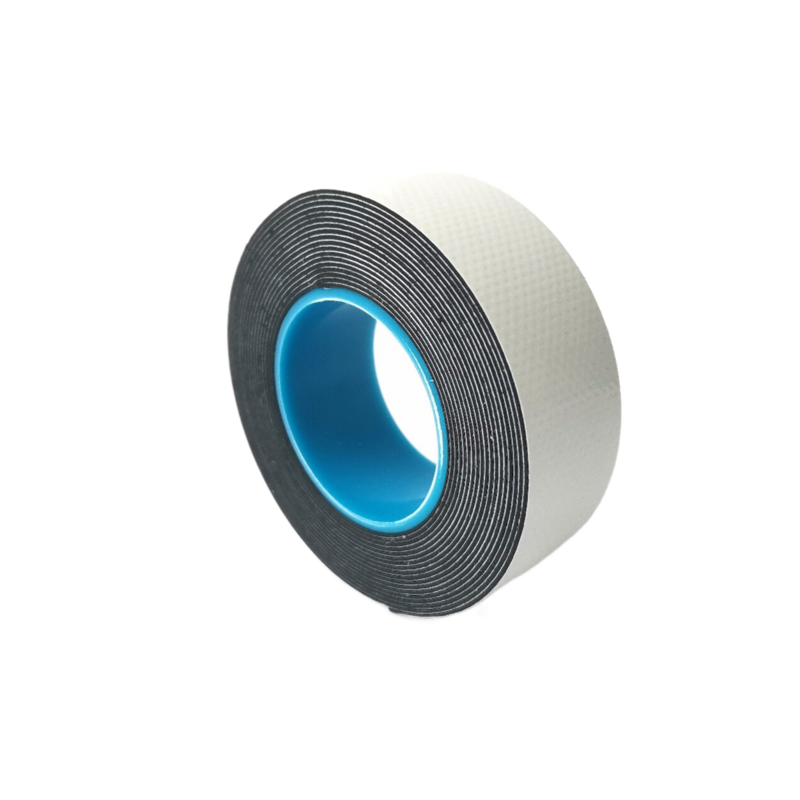
Technical Specifications of PLB Self-Amalgamating Tape
The performance capabilities of PLB self amalgamating tape are defined by a precise set of technical parameters, validated through rigorous testing against international standards. These specifications are crucial for engineers and procurement specialists to ensure the tape meets the demanding requirements of their applications. Below is a detailed table outlining the typical specifications of our PLB self-amalgamating Tape:
| ប៉ារ៉ាម៉ែត្រ | Value (Typical) | Test Standard |
|---|---|---|
| Material Composition | Polyisobutylene (PIB) Rubber | Internal QA / Material Safety Data Sheet (MSDS) |
| កម្រាស់ | 0.5 mm - 1.0 mm (varies by product line) | ASTM D3652 |
| កម្លាំង tensile | ≥ 1.5 MPa | ASTM D412 |
| Elongation at Break | ≥ 600% | ASTM D412 |
| កម្លាំង Dielectric | ≥ 15 kV/mm | ASTM D149 |
| Insulation Resistance | ≥ 10^14 Ω | ASTM D257 |
| Operating Temperature Range | -40°C to +90°C | IEC 60216 |
| Short-Term Overload Temp. | Up to +130°C | Internal Testing |
| Water Absorption (24h) | < 0.1% | ASTM D570 |
| Ozone Resistance | Excellent | ASTM D1149 |
| UV Resistance | Good (Enhanced with outer layer) | ASTM G154 |
| Amalgamation Time | Instantaneous self-fusion upon wrapping | Visual/Tactile Inspection |
These specifications underscore the PLB self amalgamating tape's suitability for mission-critical applications where high performance and reliability cannot be compromised. Its exceptional dielectric strength ensures superior insulation, while high elongation allows it to conform perfectly to irregular surfaces, providing a robust, moisture-proof seal.
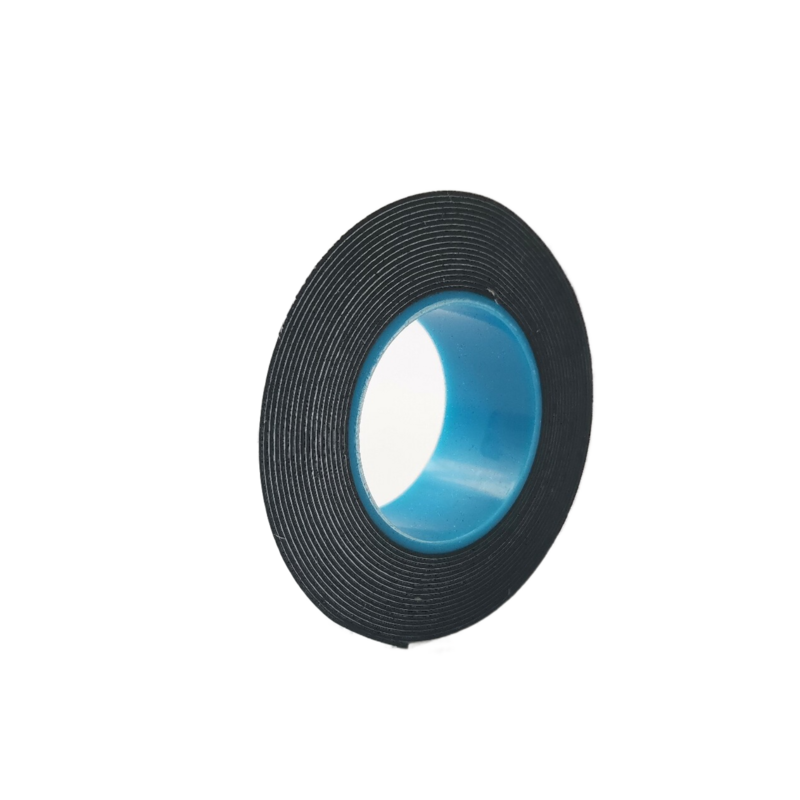
Comprehensive Application Scenarios
The versatility of self amalgamating tape makes it an indispensable tool across a wide range of industrial and electrical applications. Its ability to create a seamless, waterproof, and insulating barrier is particularly valuable in environments where environmental protection and electrical integrity are critical.
- Electrical Cable Splicing and Terminations: Used for primary electrical insulation up to 69 kV, moisture sealing, and environmental protection of all types of solid dielectric cable splices and terminations. It ensures a void-free build-up, preventing moisture ingress and electrical breakdown.
- Corrosion Protection: Applying the tape over metal components, especially in underground or marine environments, provides an excellent barrier against moisture, chemicals, and galvanic corrosion. This is vital for pipelines, conduit fittings, and electrical grounding connections.
- Waterproofing and Sealing: Ideal for sealing cable entries into junction boxes, conduit ends, and creating waterproof seals for pipe joints. Its high conformability ensures effective sealing even on irregular shapes.
- Busbar Insulation: In substations and switchgear, it provides reliable insulation and protection for busbars, preventing flashovers and enhancing safety. Its ability to conform to complex geometries is a significant advantage.
- Repair of Damaged Cable Jackets: Offers a quick and effective solution for repairing minor damage to cable jackets, restoring insulation and environmental protection without requiring extensive re-cabling.
- Antenna and Coaxial Cable Weatherproofing: Essential in telecommunications for sealing outdoor antenna connections and coaxial cable splices against moisture, UV, and salt fog, ensuring signal integrity and longevity.
- Automotive and Marine Electrical Systems: Provides robust insulation and moisture sealing for electrical connections in vehicles and boats, where exposure to vibrations, moisture, and temperature fluctuations is common.
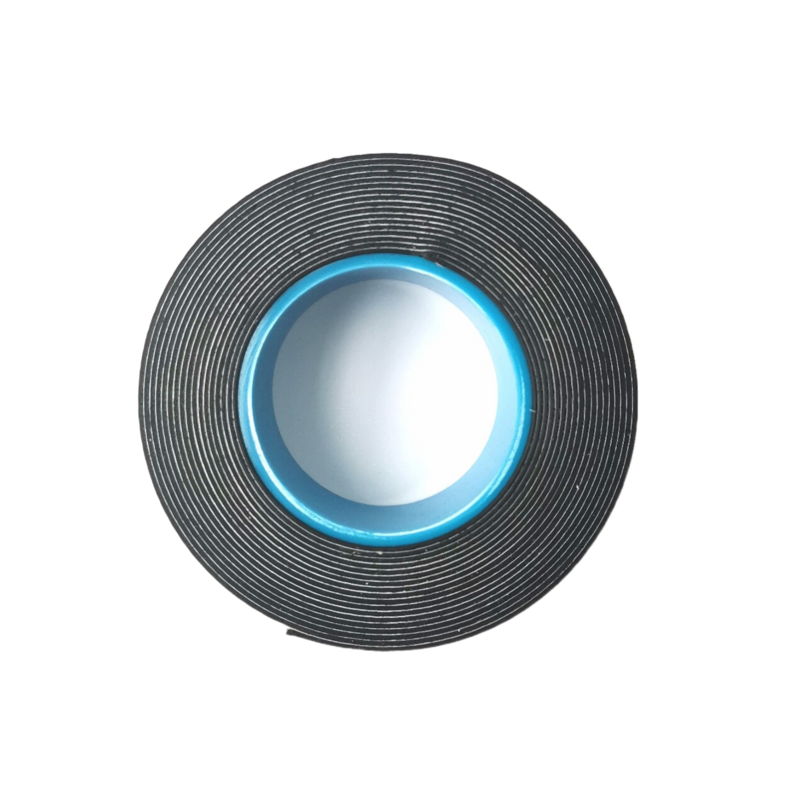
Technical Advantages of Self-Vulcanizing Tape
The unique self-vulcanizing property of this tape, often referred to as self annealing tape, provides a distinct set of technical advantages that set it apart from conventional insulating and sealing materials. These benefits translate directly into enhanced reliability, reduced maintenance, and improved operational efficiency for industrial applications:
- Homogeneous, Void-Free Seal: Upon application, the tape layers fuse together, forming a solid rubber mass without air voids. This prevents moisture ingress, electrical tracking, and significantly enhances dielectric strength, crucial for high-voltage insulation.
- Exceptional Moisture and Water Resistance: The fused barrier is completely impermeable to water and moisture, making it ideal for submerged or highly humid environments. This is a critical advantage for protecting electrical connections and sensitive components.
- Superior Electrical Insulation: With high dielectric strength, the tape provides excellent primary electrical insulation, safely containing electrical currents and preventing short circuits, even under high stress.
- Conformability to Irregular Shapes: Its inherent elasticity and flexibility allow it to conform seamlessly around complex and irregular contours, ensuring a continuous seal where other rigid materials would fail.
- Corrosion and Chemical Resistance: The PIB rubber formulation provides strong resistance to various chemicals, alkalis, acids, and atmospheric pollutants, offering long-term corrosion protection for underlying substrates.
- Ozone and UV Resistance: Enhanced formulations offer good resistance to ozone and UV radiation, making the tape suitable for outdoor applications without rapid degradation.
- Wide Operating Temperature Range: Maintains its performance characteristics across a broad temperature spectrum, from extreme cold to elevated heat, ensuring consistent protection in diverse climates.
- Ease of Application: Requires no special tools or heat sources for application. Simple stretching and overlapping create an instantaneous, permanent bond, simplifying installation and reducing labor time.
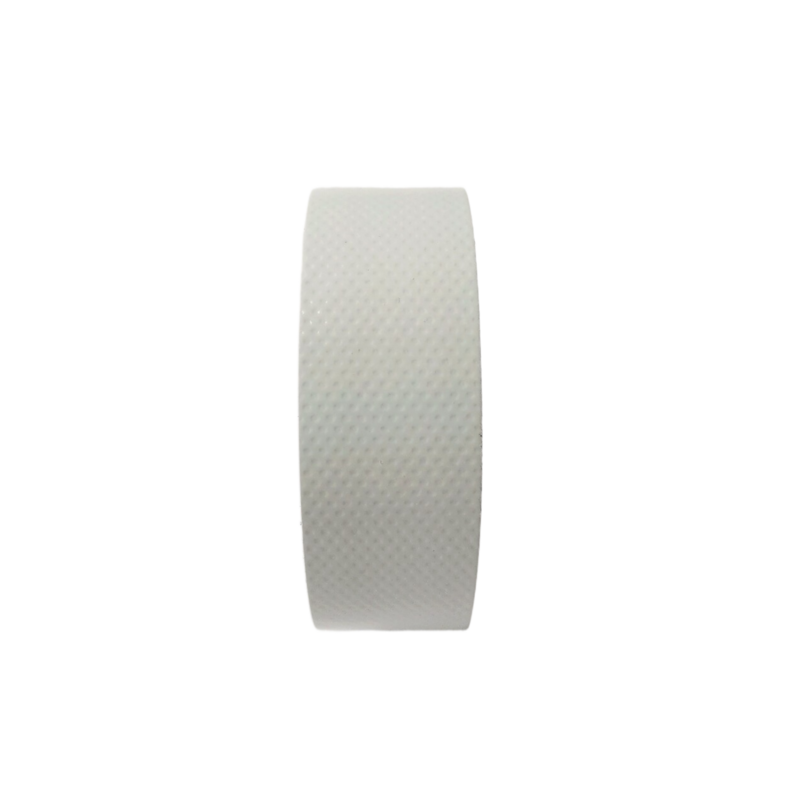
Vendor Comparison: PLB Self-Amalgamating Tape vs. Market Alternatives
When selecting an insulating and sealing solution, understanding the distinctions between available options is crucial. The PLB self amalgamating tape stands out in a competitive landscape by offering a unique combination of performance attributes. Here, we compare it against common alternatives like standard PVC electrical tape and heat shrink tubing:
| Feature | PLB Self-Amalgamating Tape | Standard PVC Electrical Tape | Heat Shrink Tubing |
|---|---|---|---|
| Sealing Mechanism | Fuses into a solid, homogeneous mass; void-free seal. | Adhesive bond; prone to voids and delamination over time. | Shrinks tightly with heat; forms a physical barrier. |
| Moisture Resistance | Excellent, completely waterproof. | Limited, susceptible to moisture ingress over time. | Excellent, if properly sealed with adhesive lining. |
| Electrical Insulation | High dielectric strength (≥15 kV/mm), primary insulation. | Good, but generally for low voltage, secondary insulation. | Excellent, primary insulation, especially for splices. |
| Application Method | Stretch and wrap; no heat required. | Wrap and press; no heat required. | Requires heat gun or torch for shrinking. |
| Conformability | Excellent, conforms to irregular shapes. | Good, but can wrinkle on complex shapes. | Good, but shape dependent; limited for highly irregular forms. |
| Corrosion Protection | Excellent, forms a barrier against chemicals and galvanic corrosion. | Limited, can allow moisture/corrosives through seams. | Good, if thick-walled and adhesive-lined. |
| Long-term Durability | Excellent, robust, and permanent seal. | Fair, can become brittle, lose adhesion over time. | Excellent, if properly applied. |
This comparison highlights that while other solutions have their merits, PLB vulcanizing tape offers a unique combination of high-performance sealing, insulation, and environmental protection without the need for heat, making it a highly efficient and reliable choice for critical applications. Its ability to achieve a permanent, void-free, and waterproof seal through self-amalgamation positions it as a superior option for longevity and performance.

Customized Solutions and Consultation
Recognizing that diverse industrial applications often require specific solutions, Qiangda Tape offers customized manufacturing and consultation services for our PLB self-amalgamating Tape. Our team of material scientists and application engineers works closely with clients to understand their unique challenges and operational requirements.
Customization options can include varying tape dimensions (width, thickness, length), tailoring specific material properties (e.g., enhanced UV resistance, higher temperature tolerance, flame retardancy), and adjusting amalgamation rates. We leverage our deep expertise and state-of-the-art R&D facilities to develop bespoke tape formulations that precisely match the demands of specialized projects, ensuring optimal performance and cost-effectiveness. From small batch custom orders to large-scale industrial partnerships, we are committed to delivering tailored solutions that integrate seamlessly into complex systems and unique environmental conditions. Our consultation process ensures that clients receive expert guidance on material selection, application techniques, and compliance with relevant industry standards.
Application Case Studies
Real-world applications demonstrate the tangible benefits and proven reliability of PLB self-amalgamating Tape in challenging industrial settings.
Case Study 1: Submersible Pump Cable Splicing in Mining Operations
A major mining company faced persistent issues with premature failure of submersible pump cable splices due to water ingress and abrasive conditions in underground mines. Traditional vulcanizing kits required specialized equipment and were time-consuming. By implementing PLB self amalgamating tape, they achieved superior, waterproof splices. The tape's flexibility allowed for rapid application even in confined spaces, and its inherent abrasion resistance provided added mechanical protection. Data showed a 60% reduction in splice failures over 12 months, significantly reducing downtime and maintenance costs. The mine reported that the ease of application and consistent performance were key factors in improving operational efficiency.
Case Study 2: Corrosion Protection for Underground Pipelines
An oil and gas pipeline operator required a reliable, long-term solution for protecting pipe joints and fittings from galvanic corrosion and chemical attack in an underground environment. Existing methods involved multi-layer coatings that were prone to cracking. PLB self-amalgamating Tape was chosen for its robust sealing capabilities and resistance to soil corrosives. Applied over prepared pipe sections, it formed a monolithic, impenetrable barrier. Inspection after five years revealed no signs of corrosion or degradation of the tape, confirming its exceptional long-term protective qualities and contributing to the integrity of the critical infrastructure.
Case Study 3: High-Voltage Busbar Insulation in Substations
A power utility sought an effective solution for insulating complex high-voltage busbar connections within outdoor substations, which are exposed to harsh weather, UV radiation, and pollution. Standard insulation methods were rigid and difficult to apply around intricate geometries. PLB self-amalgamating Tape was utilized for its high dielectric strength and exceptional conformability. Its ability to create a seamless, protective layer around irregular busbar shapes, including bolted connections, eliminated flashover risks and provided durable environmental protection. The utility reported improved system reliability and reduced need for re-insulation, validating the tape's performance in high-stress electrical environments.

Ensuring Trust and Reliability: FAQs, Lead Time, Warranty, and Support
Frequently Asked Questions (FAQs)
Q1: What is the primary difference between self amalgamating tape and standard electrical tape?
A1: The key difference lies in their functional mechanism. Standard electrical tape relies on an adhesive backing to stick, which can degrade over time and leave voids. Self-amalgamating tape, when stretched and wrapped, fuses onto itself to form a solid, seamless, void-free rubber mass. This creates a superior, waterproof, and electrically insulating barrier that is permanent and resistant to environmental factors, unlike the temporary nature of adhesive tapes.
Q2: Does the PLB self-amalgamating Tape require any special preparation or tools for application?
A2: No, it is designed for ease of use. Simply ensure the surface is clean and dry. The tape is applied by stretching it to approximately two-thirds of its original width and wrapping it with a 50% overlap. No external heat, adhesives, or specialized tools are required for amalgamation.
Q3: What is the voltage rating for PLB self-amalgamating Tape?
A3: Our PLB self-amalgamating Tape is suitable for primary electrical insulation up to 69 kV when applied correctly in multiple layers. Its high dielectric strength (≥15 kV/mm) makes it ideal for medium and high-voltage applications.
Q4: Is the tape resistant to UV light and harsh chemicals?
A4: Yes, the PLB self-amalgamating Tape is formulated with excellent ozone resistance and good UV resistance. For prolonged outdoor exposure and enhanced UV protection, it is often recommended to overwrap with a layer of high-quality PVC electrical tape or a specialized UV-resistant outer jacket. It also offers strong resistance to common chemicals, acids, and alkalis found in industrial environments.
Lead Time and Fulfillment
We maintain an efficient supply chain and robust manufacturing capabilities to ensure timely delivery. Standard orders for PLB self-amalgamating Tape typically have a lead time of 7-14 business days, depending on order volume and specific product configurations. For urgent requirements or large-scale project fulfillments, we encourage clients to contact our sales team directly for expedited options and customized scheduling. Our logistics network ensures global reach, with reliable shipping partners to deliver products wherever they are needed.
Warranty Commitments
Qiangda Tape stands behind the quality and performance of our PLB self-amalgamating Tape. All products are covered by a standard 12-month warranty from the date of purchase against manufacturing defects, provided they are stored, handled, and applied according to our technical specifications and guidelines. We are ISO 9001 certified, ensuring that every batch meets stringent quality control standards. Extended warranty options are available for long-term project partnerships; please consult your account manager for details.
Customer Support and After-Sales Service
Our commitment extends beyond product delivery. Qiangda Tape offers comprehensive customer support, including technical assistance, application guidance, and troubleshooting from our team of experienced engineers. We provide detailed product data sheets, safety guidelines, and application videos to assist our clients. For any inquiries, technical questions, or after-sales support, please contact us via our website, dedicated support hotline, or email. We pride ourselves on responsive and knowledgeable service, ensuring our clients achieve optimal results with our products.
Authoritative References
- ASTM International. (2017). ASTM D1000 - Standard Test Methods for Pressure-Sensitive Adhesive-Coated Tapes Used for Electrical and Electronic Applications. West Conshohocken, PA: ASTM International.
- International Electrotechnical Commission. (2016). IEC 60454 - Pressure-sensitive adhesive tapes for electrical purposes. Geneva, Switzerland: IEC.
- IEEE Std 400.2™-2013 - IEEE Guide for Field Testing of Shielded Power Cable Systems Using Very Low Frequency (VLF). IEEE, New York.
- ISO 9001:2015 - Quality management systems – Requirements. International Organization for Standardization.
-
Self Amalgamating Tape: Waterproof Electrical Insulation & Sealingព័ត៌មានAug.30,2025
-
Self Amalgamating Tape: Waterproof Electrical & Pipe Sealព័ត៌មានAug.29,2025
-
Medium Voltage Fusion Tape | Self-Fusing Electrical Insulationព័ត៌មានAug.28,2025
-
Butyl Rubber Tape for Ventilation Pipesព័ត៌មានAug.22,2025
-
Flex Tape Waterproof for Underground Cablesព័ត៌មានAug.22,2025
-
Flame Retardant Tapes for Circuit Insulationព័ត៌មានAug.22,2025
